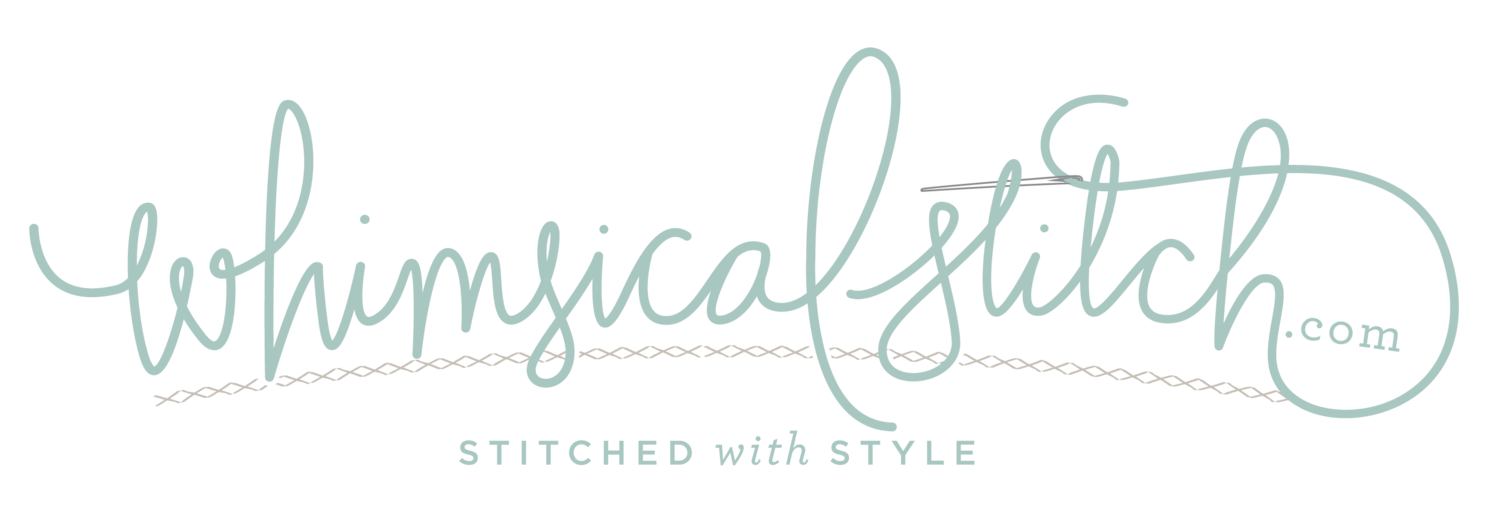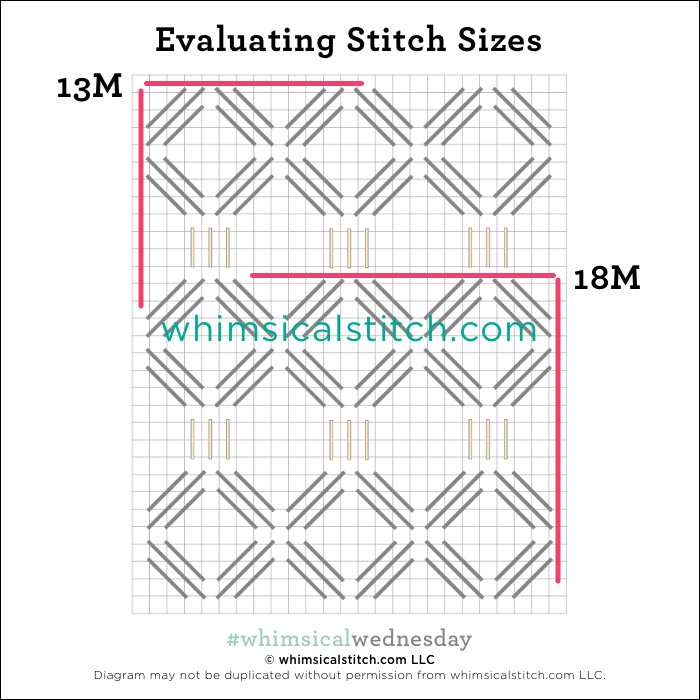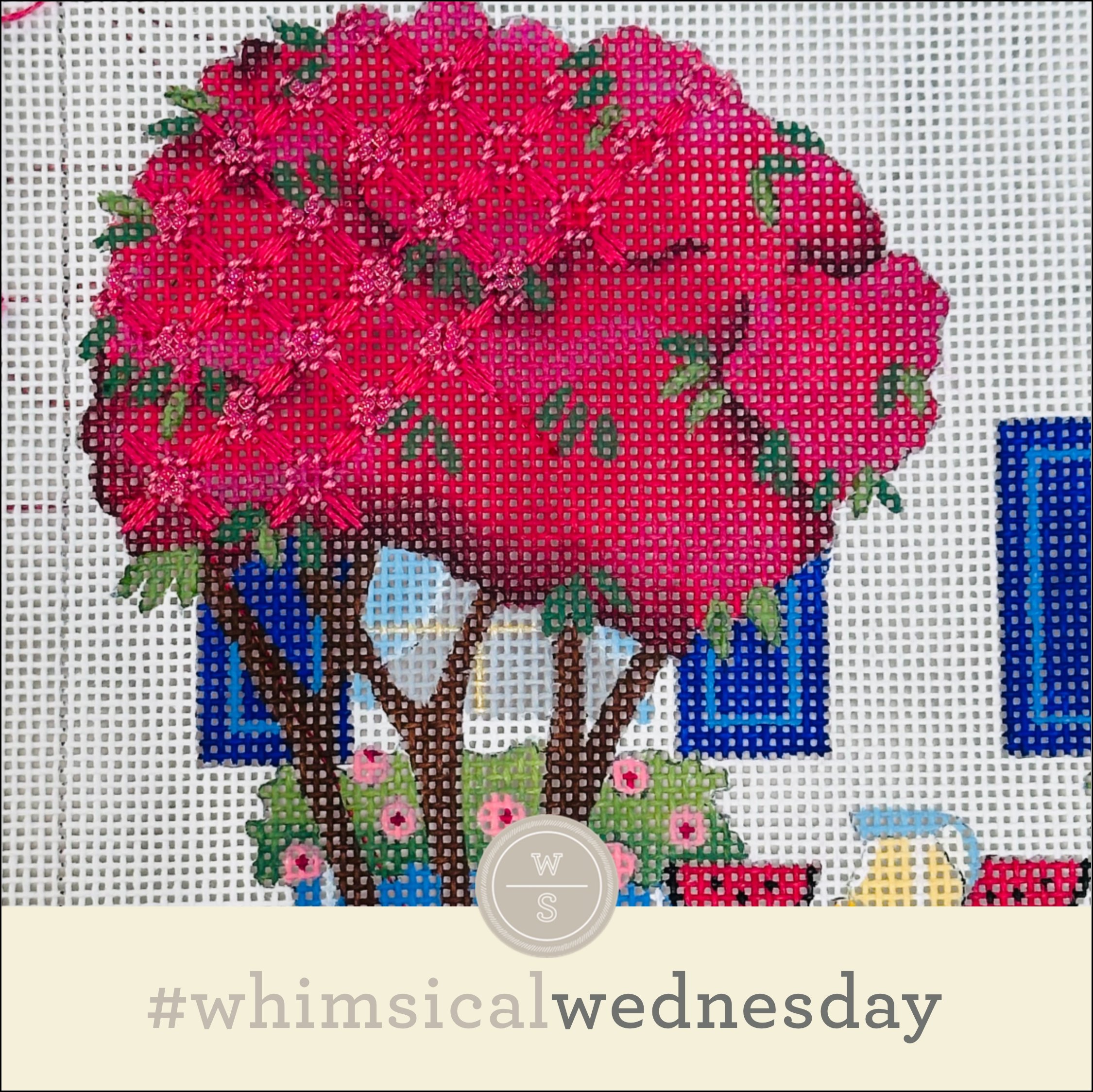Let’s raise a toast to today’s cute little stitch. It’s a long overdue variation of Skipping Nobuko from volume 3 of my books.
This stitch is the label on a darling Veuve Clicquot bottle by the one and only C’ate La Vie (instagram.com/catelavie). I used two plies of Soie D'Alger on 18M canvas. It’s definitely a light touch as I want the Veuve name to stand out even more. One is always encouraged to increase the ply count on a stitch to their comfort level.
The stitch is deceptively challenging, especially with compensation. I worked through the compensation by identifying how identical stitches lined up. In this case, the diagonal stitches over three rows and the single stitches over one row (from the lower left to the upper right) were four rows apart from their matching counterparts in both horizontal and vertical directions. The same was true for the stitches stitched from the lower right to the upper left. I began stitching at the top right corner, following horizontal paths. When I hit the Veuve, I counted up four rows from where my needle was to determine if it was a stitch over three rows or one row and what direction it was in. I’m not worried about the dragged threads because I know the Plain Needlepoint I am going to use for the lettering will cover that up.
I’m looking forward to using this stitch on greenery, such as a field or a large tropical leaf, with an appropriate overdyed silk floss or Petite Silk Lame. It will also work well for water with a lovely metallic, such as Radiance. If you want to add a little extra flair, consider using a metallic thread for the stitches over one row. Another fun change is to add a second color to the mix for a more dramatic pop.
I hope the compensation notes are helpful and that you have a spot for this stitch. Enjoy!
As you are auditioning stitches (from any stitch source), count the number of canvas threads on the diagram that match your mesh size. And there you have what an inch of the stitch will look like. Evaluate that against the area where you plan to use the stitch and make your final decision. If you start integrating this step into your stitch selection process, you may be surprised at how many stitches you think are large are much smaller than you realize.
By (sometimes) including this step in my own process, I find I am now integrating much longer stitches than I ever thought I would. I used to think a stitch six rows long was super big. I have very much changed my tune, which has helped me expand my creativity, especially for large-space stitches.
Today’s stitch diagram, along with all other #whimsicalwednesday and #smallspacesunday stitch diagrams, can also be found on a Pinterest board here. Be sure to follow whimsicalstitch.com on Facebook, Pinterest, Instagram, and Twitter.
If you like what you see on this blog, there's more. Mary’s Whimsical Stitches is a series of four books offering contemporary how-to collections of more than 200 stitches (in each volume) for all stitchers, regardless of skill level. All books include updated and sequenced diagrams from this blog, plus a collection of all-new stitches from private lessons and other class projects. Visit here to find a needlepoint retailer that carries my books.
New to needlepoint or looking for a refresher? Please download a handy how-to guide covering basic needlepoint stitches and stitch compensation techniques along with new top-line information on needlepoint materials and tools, how to handle threads, and other helpful needlepoint resources.
whimsicalstitch.com also sells Stitch Guides and Stitch Concepts for Melissa Shirley Designs, Zecca Designs, Sandra Gilmore, Purple Palm, Maggie, and Penny MacLeod, and many more. Click here to see the newest guides and click here to see the entire collection.
I hope you have the perfect spot for this stitch! Please enjoy! Have a wonderful #whimsicalwednesday!
A Note about Diagrams
I use color in diagrams to make them as clear as possible. The primary function of different colored lines is to illustrate a stitch sequence. For example, the layering of colors demonstrates you add them in that order. They can also provide ideas on integrating additional threads (one line for each color). Or, you can use the same thread for all color lines. That's where I encourage you to use your imagination for the space you are stitching!




























